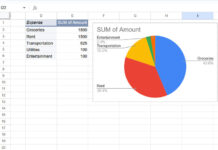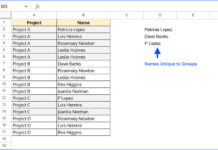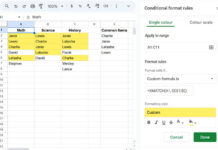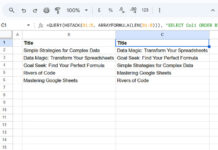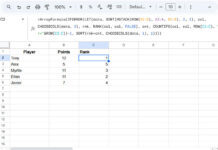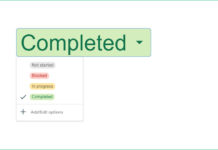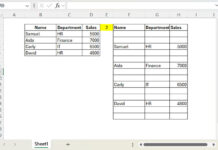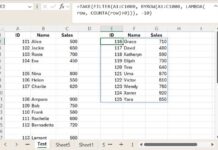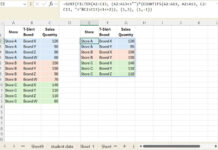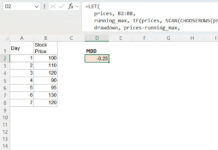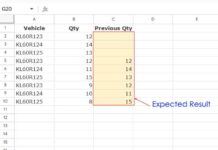We typically use the MIN function to return the minimum value between two values, but you can apply it to a range or multiple ranges.
Other functions in Google Sheets that can help you find minimum values include QUERY, SORTN, SMALL, DMIN, MINIFS, and MINA.
The closest ones to MIN are MINA and SMALL, so I’ll also explain how they differ from the MIN function.
MIN Function: Syntax, Arguments, and Examples
Syntax:
MIN(value1, [value2, …])value1– The first value or range, e.g., 50, A1, or A1:A100.value2, ...– Additional values or ranges, e.g., 100, B1, or B1:B100.
When using ranges in value1 or value2, or both, the dimensions do not need to be the same.
Examples of the MIN Function:
=MIN(A1, B1)– Returns 50 if either A1 or B1 contains 50 and the other contains 100.=MIN(A1:A100)– Returns the smallest value in the range A1:A100.=MIN(A1:A100, B10:B50)– Returns the smallest value in the combined ranges A1:A100 and B10:B50.
Additional Tips: Differences Between MIN, MINA, and SMALL
The MIN function will exclude text values from the calculation. Use the MINA function to include text values and assign them a value of 0.
When you use a range with MIN, such as =MIN(A1:A100), you can replace it with the following SMALL formula:
=SMALL(A1:A100, 1)This formula returns the nth smallest value in the range, where 1 specifies the smallest value. The advantage of using SMALL is that you can specify the position (n) of the smallest value you want to retrieve.
Can the MIN Function Return the First N Smallest Values?
Nope! As mentioned, the MIN function is typically used to find the minimum value between two values or within a column or row.
To return the first N smallest values, you can use functions such as SORTN, QUERY, or FILTER combined with SMALL.
I recommend using SORTN because it can remove duplicate values while finding the smallest n values.
The following formula returns the 5 smallest values in column A:
=SORTN(A:A, 5, 0, 1, 1)The following formula returns the 5 smallest values in column A, excluding duplicates:
=SORTN(A:A, 5, 2, 1, 1)With these additional tips, we conclude this tutorial on the MIN function. Have a look at the resources below.
Resources
- How to Exclude Zeros from MIN Function Results in Google Sheets
- Highlight Min Excluding Zero and Blank Cell in Google Sheets
- Find Minimum Value and Return Value from Another Column [Google Sheets]
- Find the Running Minimum Value in Google Sheets
- How to Use MIN in Array in Google Sheets for Expanded Results
- Min in Vlookup in Google Sheets – Formula Examples
- Hyperlink Max and Min Values in Column or Row in Google Sheets
- How to Retrieve Column Header of Min Value in Google Sheets
- Get Min Date Ignoring Blanks in Each Row in Google Sheets
- Max and Min Strings Based on Alphabetic Order in Google Sheets
- Filter Min or Max Value in Each Group in Google Sheets
- Sum Min or Max Values in Pivot Table in Google Sheets (Grand Total Issue)
- How to Highlight the Min Value in Each Group in Google Sheets
